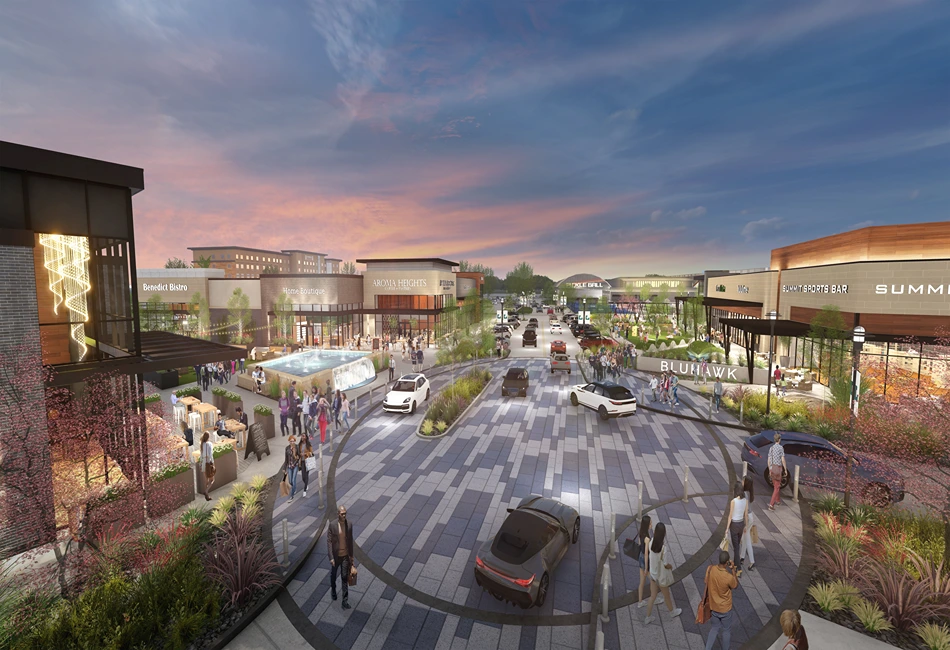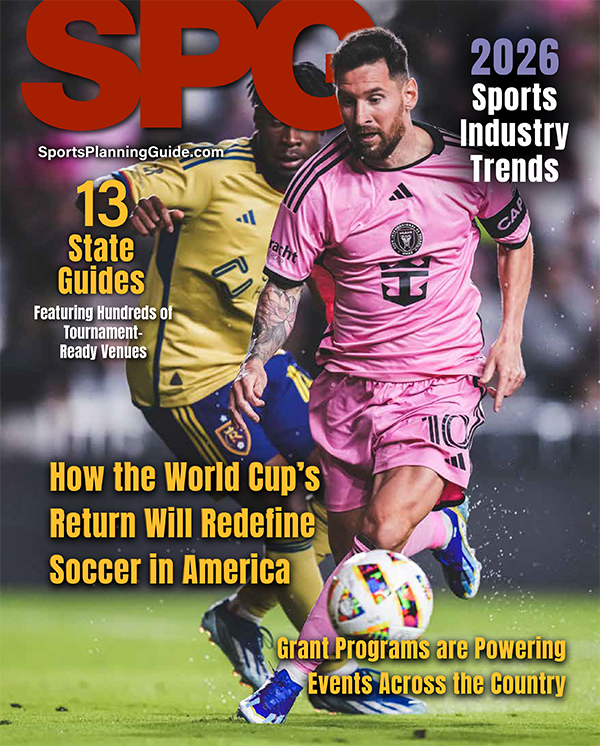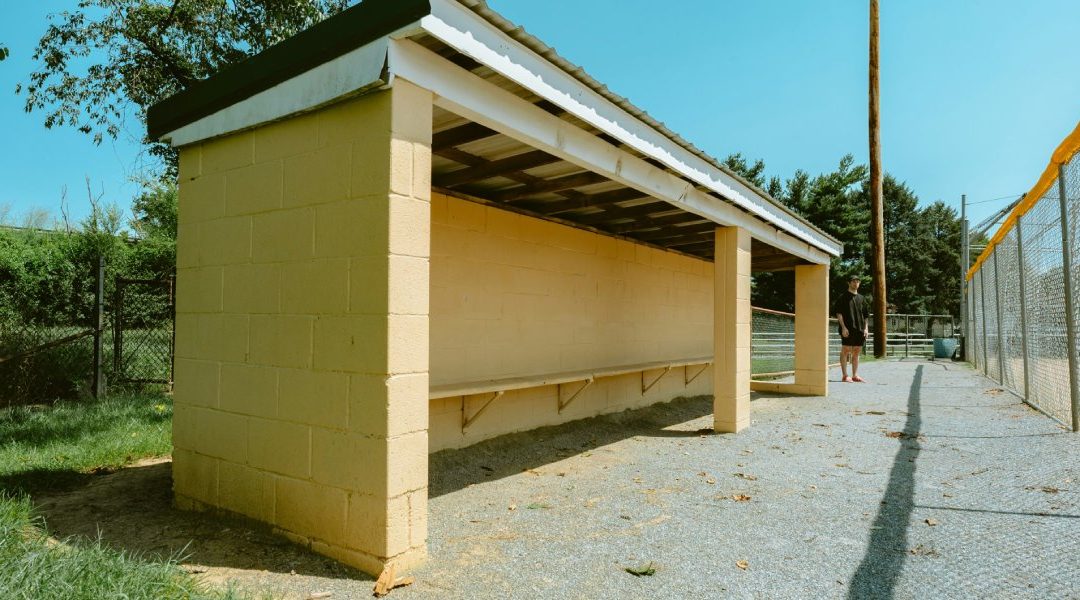How Mixed-Use and Multi-Purpose Will Define the Future of Sports Tourism Complexes
For the last decade, youth sports have been booming thanks to the rise in popularity of travel teams and regional tournament scenes. On the climb toward its projected $70 billion valuation in 2026, the youth sports industry, currently valued at $52.2 billion in direct spending by the Sports Events & Tourism Association (AKA Sports ETA) has now caught the attention of private equity firms, big-name investors, and real estate developers. Enter the rise of the mixed-use development anchored by youth sports mega-facilities.
Stay Ahead in Sports Planning—Subscribe Today! and Read More Sports Info for FREE
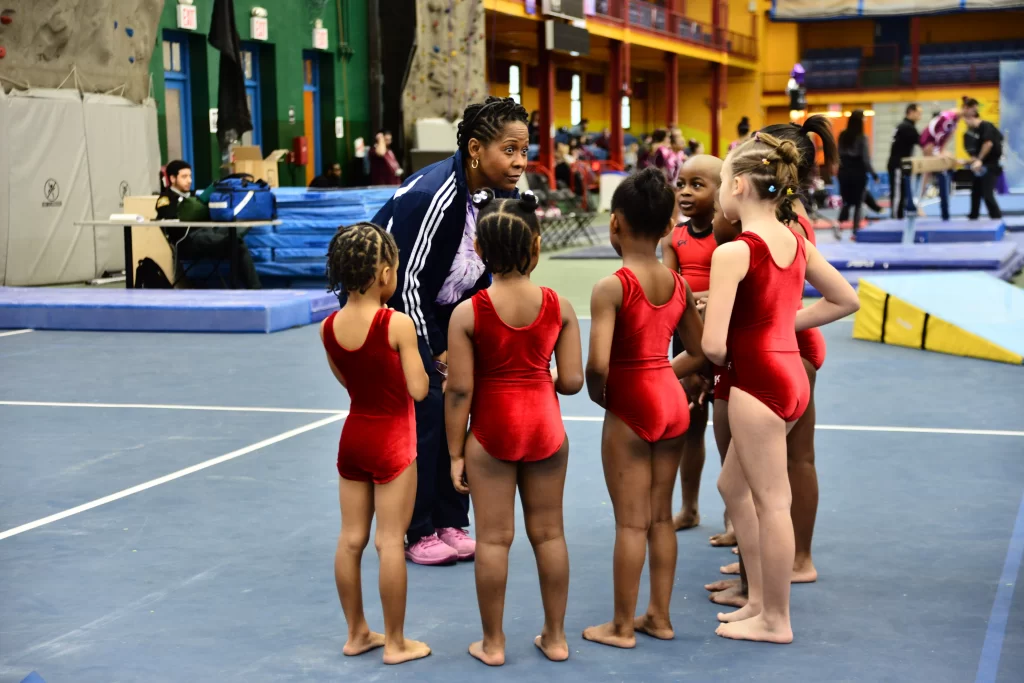
The game is changing
The pendulum of development has swung from the local use, government-led parks and recreation projects to tourism-led sports mega-facilities that drive thousands of visitors each year. We’ve seen the intersection of these two ideas creating the ‘hybrid’ mega-facility which not only hosts a bevy of tournaments each year that throw off millions in economic impact through tourism spend, but also hosts local programming, community events, entertainment, and wellness initiatives. Sand Mountain Park & Amphitheater in Albertville, AL and the Hoover Met Complex in Hoover, AL are two great examples of facilities hitting both community engagement AND sports tourism goals for their cities. With dedicated city leadership and proven operating partnerships, the unifying factor for these facilities has been public funding and public oversight.
In both Alabama-based examples, the economic impact of new market spend from sports tourism has created measurable community development around the properties. By attracting families, creating economic activity, and enhancing local real estate values, these facilities are setting a new standard for community-centered development.
Youth sports facilities are the “hottest mixed-use anchor” because they don’t just serve athletes—they engage entire communities. Public-private-partnerships (P3s) are the key to unlocking a development like this in a community – and maintaining control on pricing, programs, and performance of the asset.
The Growing Real Estate Trend of Youth Sports Facilities
The success of these complexes stems from their ability to attract high volumes of visitors who stimulate local economies by patronizing nearby businesses, hotels, and restaurants. For developers, anchoring a mixed-use development with a youth sports facility creates a stable, high-traffic center that draws diverse groups—from athletes and their families to local community members—who interact with the surrounding retail, entertainment, and dining options.
These facilities generate foot traffic comparable or exceeding that of shopping malls or entertainment centers, fostering a “halo effect” that spills over into neighboring properties. This boost in foot traffic not only benefits nearby businesses but also encourages further investment in housing, retail, and hospitality around the complex, creating a comprehensive community where families want to live, work, and play.
For example, AdventHealth Sports Park at Bluhawk in Overland Park, KS is one of the nation’s best examples of a purpose-built youth sports development anchor. This massive 260,000-square-foot facility includes eight basketball courts, an NHL-regulation sized ice rink, a 40,000 square-foot indoor turf field, sports performance center, two dining options and entertainment galore. Developed by the Price Brothers Management company and operated by The Sports Facilities Companies, this facility anchors 270,000 square feet of retail, 110,000 square feet of office space, 180 single-family homes and 200 apartment units. In the spirit of public-private-partnership, the entire Bluhawk was the recipient of about $53 million in STAR bonds from the state of Kansas – a funding mechanism unique to Kansas and few other states to boost tourism.
This strategy is being leveraged by municipalities acting as their own real estate developer as well. In New Lenox, IL, village leadership is constructing a 100-acre sports park known as Crossroads Sports Complex and has reserved more than 70+ acres of adjacent land for the development of restaurants, retail stores, and hotels. As construction takes shape and the sports park opens – creating an expected $12 million in its first year of operation in New Lenox- the surrounding land values increase dramatically. These future tax dollars and incremental land values can be used as funding mechanisms for the sports park development.
Level Up Your Event Planning Skills—Subscribe Now and Download the SPG Magazine for Expert Tips and News

Experience Matters
The success of these facilities speaks to a broader trend in real estate: the move toward experiential destinations that offer more than just places to shop or dine. Today’s families are looking for communities where they can live, work, and play, and youth sports facilities are a natural fit within this vision. For traveling sports families who are often on the road, the demand for a great guest experience is becoming increasingly more competitive.
Youth sports tourism has been hailed as ‘recession resistant’ thanks to its performance during the great recession in 2008-2009 – the only travel sector not to decline during that period- and again as a major contributor to the recovery of the travel and tourism industry following the COVID-19 pandemic. Many families consciously make sacrifices to ensure their children can play in travel sports – including cutting other recreational travel.
If your only vacation is a “tourna-cation” you might be looking to extend that weekend in Myrtle Beach to give your family time at the beach. Or to explore the Great Smoky Mountains after your visit to Rocky Top Sports World in Gatlinburg. You might also be looking for the simpler comforts; on-site entertainment for little brother or sister, better options for lunch than your typical concession-stand hotdog, and some creature comforts like wifi and a comfy place to sit.
New facilities are being development with these comforts – and more. A glimpse of the new vision of the tourna-cation includes an on-site hotel – park the car and leave it for the weekend. It also includes multiples on-site dining options with a fresh and/or local selection of dishes, unique family entertainment, and maybe even a beer while you watch the next soccer match.
The majority of the time, these are not facilities that could be justified off local recreation programs and events alone. By combining the flexibility and density of sports and events spaces, quality food and beverage, on-site entertainment and more, these facilities become more self-sustaining, create a great guest experience for traveling families, and are an amazing community amenity.
Moreover, youth sports mega-facilities often provide opportunities for residents to participate in sports leagues, fitness programs, and community events. This community-centric approach creates a virtuous cycle where residents contribute to the success of the facility, and the facility, in turn, enhances the quality of life for the community. This synergy is a powerful draw for families, many of whom are willing to move to communities that support this lifestyle.
Keep Your Finger on the Pulse of Sports Planning—Subscribe and Never Miss an Update
Access & Equity
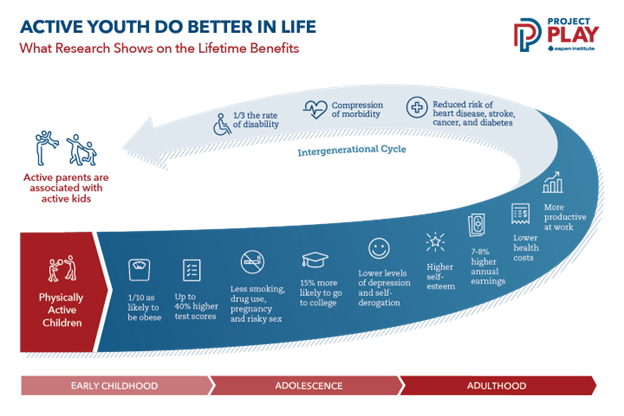
Youth sports facilities are designed to be inclusive spaces that support recreational activities and provide gathering places for families and community members. By integrating sports complexes into mixed-use developments, developers are not just creating economic hubs; they are building vibrant communities where people can connect, engage and enjoy shared experiences.
Here’s the thing, though, when you build a sports complex for $120 million dollars the pressure is on to create a development – or sports operation – that is sustainable. With pressure on the micro-economics of youth sports, there are many families who simply can’t afford to play.
Where public tax dollars are in the mix, there is an inherent responsibility for affordability in the community. Many municipalities are solving this with local discounts or zip-code based pricing models, income-based scholarships, ongoing subsidies, and leveraging the freemium model. The freemium model is a business strategy that involves keeping the price for basic features free or low-cost (e.g. memberships to the new fitness center) but offering upgrades for an additional cost.
What can’t and shouldn’t be overshadowed in the “how” is the “why”: physical activity has measurable, meaningful impacts on children. The Aspen Institute’s Project Play illustrates this with stats like children who are physically active are 15% more likely to go to college, have 1/3 the rate of disability, and are 1/10 as likely to be obese.
The Future of Youth Sports Anchors in Real Estate
As the demand for youth sports facilities continues to grow, so does their potential as anchors for new real estate developments. From providing economic stability to enhancing community cohesion, these complexes are proving to be valuable assets for cities and developers alike. Youth sports mega-facilities represent a new era of mixed-use development, where the needs of families, athletes, and communities come together to create thriving, interconnected spaces. These facilities are more than just sports venues—they are the anchors of the communities of tomorrow, driving economic vitality, fostering community connections, and enhancing quality of life for all who visit.
Author: Ashley Whittaker, Partner, Sports Facilities Companies
Ashley is a dynamic leader at Sports Facilities Companies (SFC), overseeing brand strategy, marketing, and sales, where her initiatives have tripled inbound leads and garnered media features in outlets like HBO and Forbes. As Editor in Chief of Community Playmaker and head of SFC’s in-house agency, she spearheads industry-leading platforms and strategies that amplify the brand and support local government leaders and SFC venues nationwide.
Join the Community of Sports Planners! Get Your Free Subscription and Download the Sports Planning Guide Magazine for FREE

